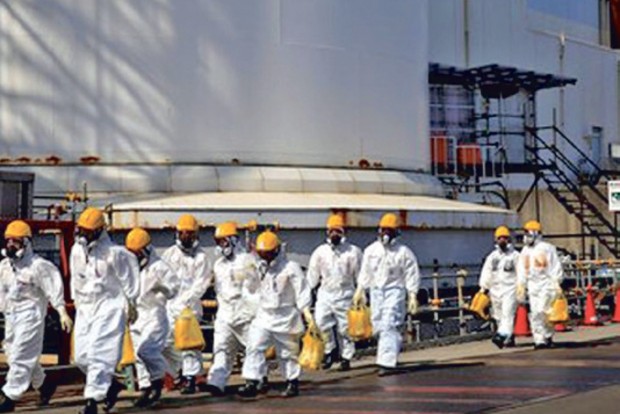Begin typing your search...
Radiation concerns, a decade after Fukushima
As Japan marks the 10-year anniversary of the most destructive natural disaster in its recorded history and the nuclear accident that it triggered, the operator of the Fukushima Daiichi power plant has expressed confidence that efforts to decommission the site are on schedule.

Chennai
Anti-nuclear campaigners are critical of that position and insist that Tokyo Electric Power Co.’s plan to complete the decommissioning of the three reactors that suffered meltdowns has “no prospect of success and is delusional,” while people living in areas that were directly beneath the plume of radioactivity in Mar 2011 say their lives have been changed irreparably and forever.
The crisis at the Fukushima nuclear plant followed the magnitude-9.1 Great East Japan Earthquake on the afternoon of March 11, 2011. The quake, the fourth most powerful anywhere in the world since modern record-keeping began in 1900, caused a series of tsunami waves that in places reached more than 40 meters high and bore down on the coast of northeast Japan.
The tsunami breached the nuclear plant’s sea defenses and flooded the lower parts of four of the site’s six reactor buildings, causing the failure of emergency generators required to keep water pumps circulating cool water for the reactors. The overheating of the reactor cores caused three of the units to suffer meltdowns, with operations of the fourth unit suspended for maintenance at the time of the disaster.
In the days after the accident, the government ordered the evacuation of more than 154,000 people living in surrounding towns and villages. The accident is still classed as the second most serious nuclear accident in history, behind the Chernobyl disaster, and experts estimate that around 18,000 terabecquerels of radioactive caesium-137 were released into the Pacific Ocean, along with varying amounts of strontium, cobalt, iodine and other radionuclides. Nobuyoshi Ito ignored requests from the authorities to leave his home on the outskirts of the town of Iitate after the disaster a decade ago. He insisted that he was already old, that the radiation would be unlikely to impact his longevity and that he needed to remain to serve as a human test subject. Now 76, he has spent the last decade monitoring radiation levels in the surrounding hills, as well as in crops that he grows and wild fruit and vegetables.
“Three years ago, they lifted the evacuation order and they have been encouraging people to return ever since,” he told DW. “I’ve been recording the radiation levels since the accident and they have certainly gone down, but the soil here will be contaminated for years to come. People should not be told that it’s safe to come back because I do not believe it is.” Akira Ono, the head of the Fukushima site and chief decommissioning officer, said this week that there is no need to revise the target of completing work to render the reactors safe, which has been set at between 2041 and 2051. “We will stick to the 30-to-40-year finishing target,” he told AP. That is despite new revelations that levels of cesium on the primary containment chambers of two of the reactors are far higher than previously believed, which will further complicate the decommissioning work. Also, much remains to be discovered about the melted fuel that fell out of the core to the base of the containment chambers of the three reactors.
Shaun Burnie, a nuclear specialist for Greenpeace East Asia, insists there is no likelihood of TEPCO’s schedule being met and that the authorities are continuing to ignore the risks to people’s lives. “Successive governments during the last 10 years … have attempted to perpetrate a myth about the nuclear disaster,” he said. “They have sought to deceive the Japanese people by misrepresenting the effectiveness of the decontamination program and ignoring radiological risks. Fukushima Daiichi is already and should remain a nuclear waste storage site for the long term,” he concluded.
This article was provided by Deutsche Welle
Visit news.dtnext.in to explore our interactive epaper!
Download the DT Next app for more exciting features!
Click here for iOS
Click here for Android
Next Story



